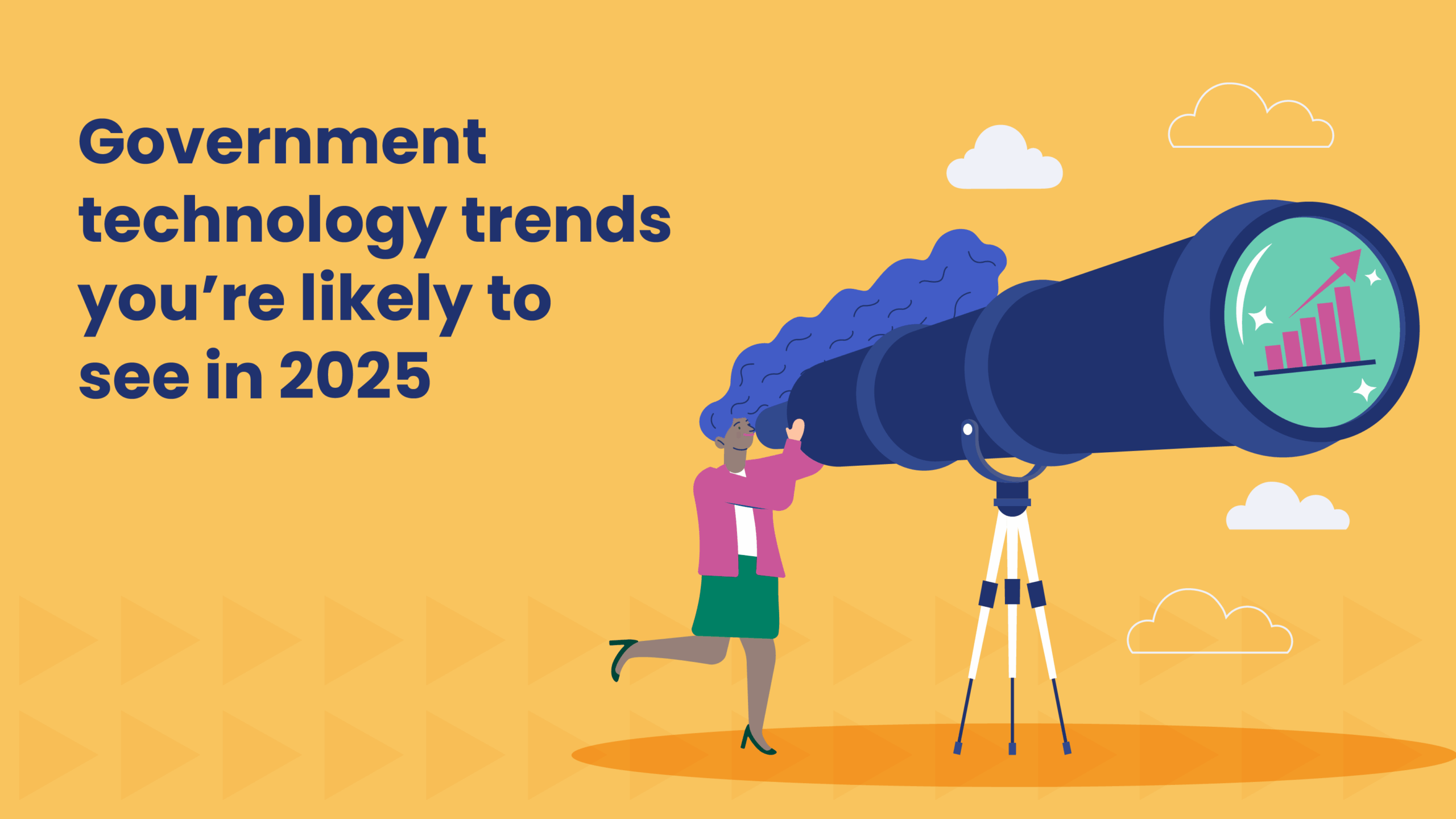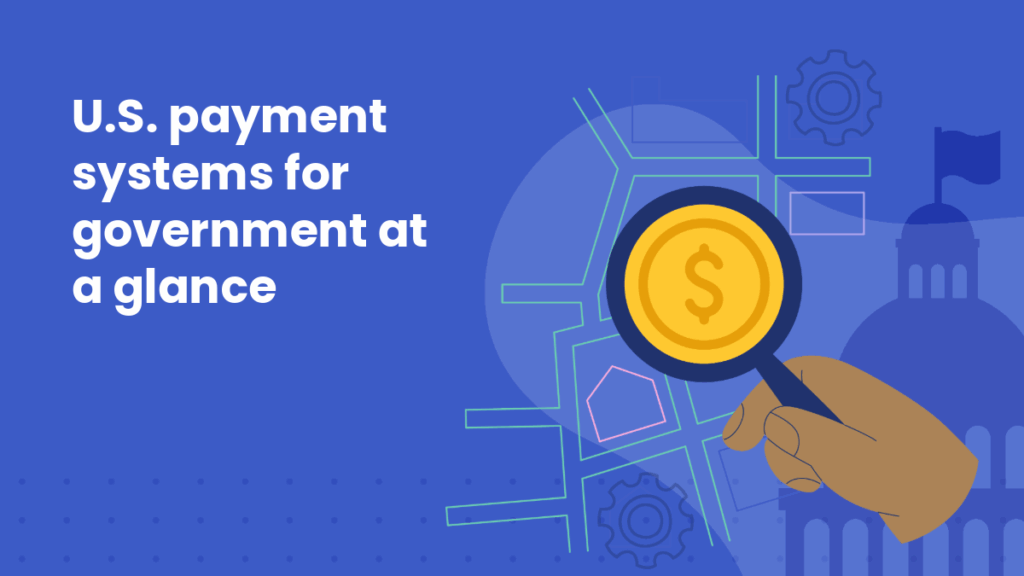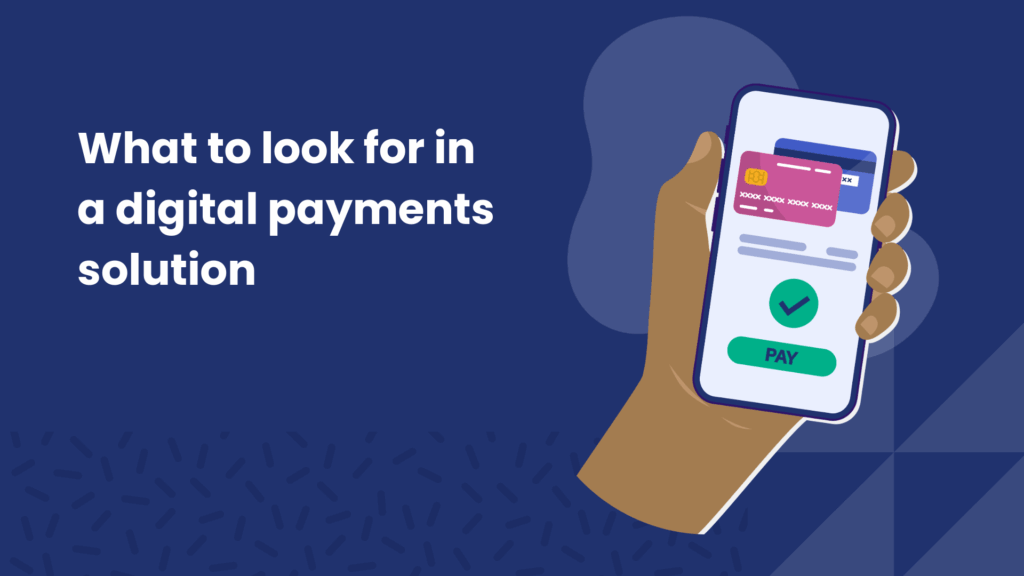Government technology trends and predictions for 2025

From 2023 to 2024, trust in government dropped — and the majority of people are under the impression that government officials lack adequate understanding of emerging technologies to regulate them effectively.
Going into 2025, government agencies will have to find a balance between technical agility, data security, and consumer experience. As governments continue to modernize, agencies will face challenges related to new technology, higher user expectations, and skepticism from residents.
Government technology trends you’re likely to see in 2025
What are we expecting? Our in-house experts and members of the marketing team predict that these are a few hot topics you’ll probably hear more about next year:
User experience
1. Digital government services become more proactive
Proactive digital government services are the most user friendly experience an agency can provide — and also the most effective. Redesigning public services means that not only is digital the first touchpoint but also that digital is the primary way that governments communicate with residents.
And “going digital” shouldn’t just be one-off interactions. Proactive digital services are event-based. Sure, that includes stuff like bill reminders, but it also means automatic triggers to notify a resident if/when they’re eligible for a service.
The first wave of digital services moved to a paper-based flow into the digital world. With the 2.0 wave, expect a more thoughtful approach to what a true digital-first experience should be.
2. Targeted investment in customer experience
Most people don’t want to miss a utility bill or property tax payment, but often, digital government solutions make the payment process more confusing and difficult than it should be.
There is a good deal of cognitive load for people trying to make a payment, so we are focusing design efforts on reducing that load and reassuring the user that they are square with their government and their payment has been made.
In 2025, expect to see agencies put more effort into designing products and services that meet people where they are, providing an experience that helps users navigate the process — easing their mental burden, ensuring accessibility, and building trust between residents and their government.
Anna Challacombe, Lead Product Designer
Data security
3. Identity and access management (IAM) becomes more important than ever
Cybersecurity topped NASCIO’s State CIO 2024 priorities, and with the heightened risks of deepfakes, identity fraud, and misuse of AI, it’s likely that security measures like IAM will remain a top priority in 2025.
IAM protects important personal information and private data, making it a critical component of digital government transformation. Measures such as single sign-on, multi-factor authentication, and secure tokens are widely used in private-sector digital platforms, so customers are well aware of how they work — and why such security measures are important.
We know data breaches, hacking, and digital fraud worry consumers, so if agencies aren’t meeting people’s data security expectations, they risk losing residents’ trust. (They also risk hindering digital adoption — and revenue delays for agencies.)
The bar for privacy and security is rising in 2025.
Conservation technology
4. Consumer experience is a priority
As relevancy efforts continue to grow and states align these initiatives with R3 strategies, consumer experience is becoming a pivotal factor in success. According to PayIt’s 2024 Consumer Digital Government Adoption Index, younger generations are less tolerant of inefficient digital processes, with 37% of 18-29-year-olds indicating that they would avoid using an online payment system if the experience is confusing. This presents a challenge to state agencies where people have a choice to interact with them.
With the rise of AI-driven response capabilities, expect state conservation agencies to prioritize intuitive user experiences and efforts to reduce regulation complexity in order to stay adaptable in this ever-evolving landscape.
Emily Schrader, Senior Client Success Manager
Emerging technology
5. Government agencies put AI policies in place
Many agencies are already testing out AI; however, since even something as simple as creating a free account with a work email or uploading a set of agency data can create risk, there’s a real sense of urgency to get guardrails in place.
Government agencies can’t ignore AI, but most are (and will be) operating cautiously. For example, it only takes one wrong figure or a hallucination for a municipality to come under fire for something a bot got wrong.
In 2025, agencies will likely continue looking for ways to use AI but also candidly discuss what could go wrong. Policies will likely be focused on security, ethics, and privacy. Because many residents are already wary of AI, government agencies need to put strict barriers in place to protect personal information. We’re also expecting to see more AI-focused internal training and messaging that communicates security policies with the public.
Government staffing
6. Re-engineered hiring process
A long, complex hiring process has been the norm for many government positions. With staffing shortages and the looming “silver tsunami,” it’s become more important for agencies to create a quicker hiring process (and more incentive for talent to stay). We’ve already seen the shift begin, but in 2025, we’ll likely see more agencies prioritize attracting talent, accelerating hiring processes, modernizing work processes, and investing more in skill development and career growth.
Look for governments to incorporate more of these tactics into their hiring process: online applications, strategic and improved candidate communication, timely notifications, and next steps. Expect better messaging to strengthen the talent pipeline and an effort to reduce barriers to government jobs and career growth.
7. Generational and cultural changes shift ways of working
Workplace dynamics are changing, and to attract talent in 2025, expect to see government agencies offering hybrid and remote work, upskill and career development, and a mission-driven environment. Agencies will also find ways to offer higher pay, promotions, or flexibility to compete with private sector companies. Also you’ll likely continue to see a shift toward skill-based hiring — paving the way for people with other credentials and non-traditional hiring backgrounds.
Start the new year by aligning technology and user experience to build trust
In 2025, digital trust (including government services) is a critical issue. Many people will be more skeptical about what they’re interacting with online, and it will likely influence how they engage with digital government services.
Governments won’t be able to avoid the impact that AI will have on their modernization projects, whether it’s internal automation, consumer worries, or new security concerns. And since trust in government is iffy, we’re expecting consumers to seek more personalized, user-friendly, and human interactions; think easy, intuitive self-serve digital options and knowledgeable clerks and support staff to help troubleshoot issues or answer unique questions.
As the predicted trends hint at, your best bet will be to approach digital services with authenticity and transparency — prioritizing both innovation and humanity in your agency’s online presence.
Looking for more content?
Get articles and insights from our monthly newsletter.




